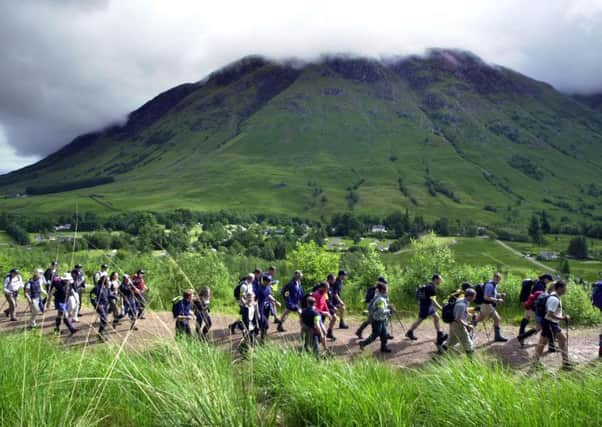Ilona Amos: Putting a price on what nature means to Scotland


Perhaps strangers to our shores have a clearer vision. Research suggests the Scottish scenery is the top reason visitors from the UK and abroad choose to come here, while viewing wildlife is credited as the main driver for more than a million trips to Scotland each year.
Tourism is one of the country’s key income streams, worth at least £4 billion a year and providing employment for 200,000 people. Nature-based visits are a big part of that, contributing 40 per cent of all tourism spending – this amounts to £1.4 billion of the annual total. It brings a whole new meaning to the term ‘green pound’.
Advertisement
Hide AdAdvertisement
Hide AdThe market encompasses all manner of activities, from walking and climbing to adventure activities such as mountain-biking, diving, white-water rafting and sailing, as well as the long established pursuits of hunting, shooting and fishing. And believe it or not, some people come here simply to look at the wildlife.
Walking is the most popular visitor activity, with favourite destinations such as Ben Nevis and the country’s 282 Munros bagging £533 million for the economy. More than 400,000 people visit Glen Nevis each year, 110,000 of them conquering the UK’s highest mountain. The West Highland Way is another major draw, with 30,000 ramblers walking the whole route and the same number again doing part of it. Driving holidays through the more scenic parts of Scotland bring in £420 million a year, while adventure activities rack up £178 million and field sports £136 million.
Wildlife tourism is a growing niche. It has boomed over the past couple of decades, covering pursuits from bird-watching and whale-spotting to specialist conservation holidays and even geology field trips. The latest figures put its worth at around £127 million annually.
Part of the draw is the opportunity to see wildlife you are unlikely to see anywhere else. Think red squirrels, golden eagles, pine martens, puffins, maybe even a capercaillie or a wildcat. Then there are white-tailed sea eagles on the Isle of Mull, which bring visitors flocking to the island in their thousands in the hope of catching a glimpse of the impressive birds of prey. The two pairs - Fingal and Iona, and Hope and Star - are credited with generating £2 million for local coffers. It’s a pretty impressive return, until you hear about the east coast’s dolphins, whose acrobatics are responsible for bringing in double that.
June is the peak month for nature tourism, and when you consider what’s on offer around the country right now, it’s hardly surprising.
The season’s first sightings of basking sharks have been reported off the west coast in recent days, while migrating whales have been delighting onlookers in various hotspots. A pod of orcas from Iceland made an unexpected appearance in north-eastern waters recently. Seabirds have recolonised cliffs and headlands after over-wintering elsewhere, and ospreys have returned to set up home in their favourite Scottish haunts, with nest-cams allowing a close-up of newly-hatched chicks.
We are lucky to live in this wild and beautiful land and to be surrounded by such fascinating native wildlife. It’s important we look after it all – not just for the economic benefits but for the good of all, locals and visitors alike.